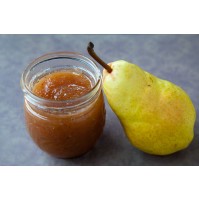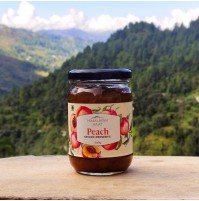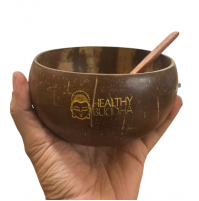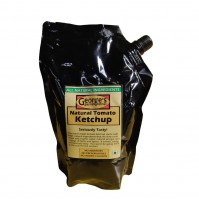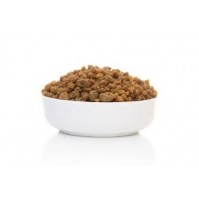-
Fruits & Vegetables
- Daily Staples
Oopss, are you sure you want to move away from this page... You were in the middle of editing an existing order, and may want to complete the transaction by hitting the checkout button
Move awayContinue Shopping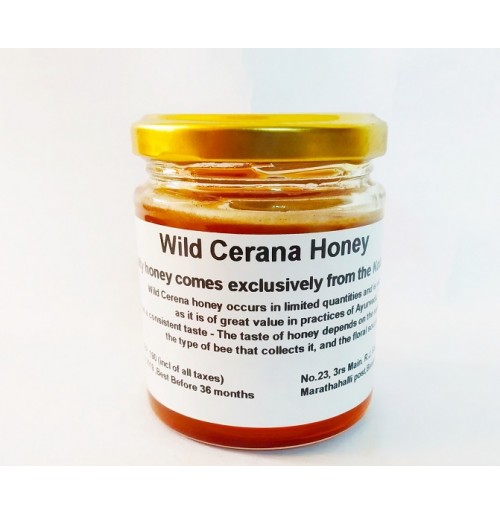
Wild Cerana Honey
-
Rs65
Qty :This specialty honey comes exclusively from the Kodai forests. Asian Honey Bees (Apis Cerana) build small hives in crevices of trees and mounds, which are rich in golden sweet honey and have fine floral undertones. Wild Cerena honey occurs in limited quantities and is very rare, as it is of great value in practices of Ayurveda.
This honey is gotten by a group of four women who work together to bring wild honey gathered by adivasi communities of the Palani Hills in Tamil Nadu to you. The Paliyans, an indigenous tribe in the Palani hills, foray into the Shola forests in groups for days to gather the honey. They camp in the forests and build their tools on the spot with vines and dried twigs. A small prayer is offered before skilful climbers clamber up (trees or cliffs) to the hives. They smoke out the bees, deftly collecting only the honey chamber of the hive. The honeycombs are brought down and the honey is extracted. Leaving behind hives for the following season and the bees, they return with cans of honey on their long journey home.
Debunking some myths about honey:
- Honey is naturally golden in colour - The colour of honey varies widely and depends on the flowers the bees feed on. Honey can be blonde, burgundy, dark brown and even golden.
- Crystallised honey has been tampered with (by adding sugar or jaggery) - Honey crystallises in cold weather due to its glucose content. Simply placing the jar in warm water brings it back to its liquid state. In fact, in certain parts of the world, crystallised honey is used like a jam.
- Honey has a consistent taste - The taste of honey depends on the season of its collection, the type of bee that collects it, and the floral source. In fact, not only do varieties of honey taste different, different batches of the same variety also do.
- A layer of residue on top of the honey shows honey has gone bad - The residue formation on top of the honey is nothing but pollen, naturally found in the honey. When honey is left untouched for a long period of time, the pollen forms a thin film on top. Simply stirring the honey will make the pollen dissolve.In fact, more and more people today consider bee pollen to be a superfood. In many countries, bee pollen is consumed as a distinct item.
Store in a cool, dry place and away from heat.You may also likeRs435 - 1 BottleThese are made in small batches with support our bakery using hb orgaic pear and hb organic sugar.In
Rs435 - 1 KgThis jaggery comes from a different source than our regular source. This is a very good jaggery, whe
Rs435 - 1 BottleMade with juicy Himalayan Peaches infused with a hint of spices. Spread on toast, top on pancak
Rs435 - 1 PieceThis is an ideal bowl size to have a good breakfast or to have a big bowl of fruits. They are h
Rs435 - 1 PieceThis is the same tomato ketch up by Georges Gourmet Kitchen. will be ideal for refill. Also ca be us
Rs435 - 500 GmsJaggery granules are a natural sweetener made by processing sugarcane without the use of chemicals o
Popular Searches
- Organic Cow Ghee
- order fruits online
- buy dry fruits online
- whole wheat bread
- buy millet flour
- fresh vegetables online
- Healthy Snacks Online
- Buy Gardening Tools
- Buy Books Online
- Traditional Utensils Online
- Personal Care Products Online
- Buy Natural Cleaners
- Pooja Essentials
- Button Mushrooms
- Brown Sugar
- Brown Eggs
- Jaggery Powder
- Banana Leaf
- Cold Pressed Sunflower Oil
- Peanut butter
- Daily Staples
Taking Orders For MONDAY Delivery. | Min. Order Value now at Rs. 399

